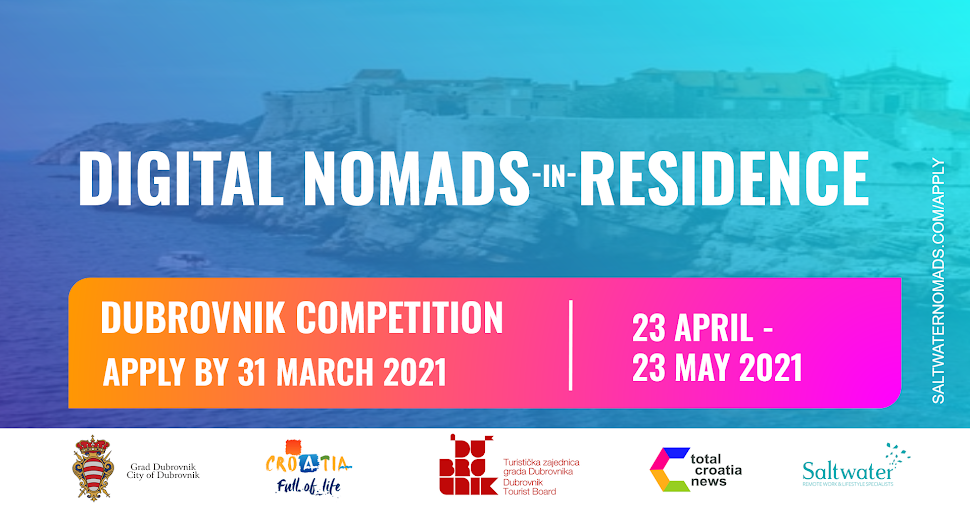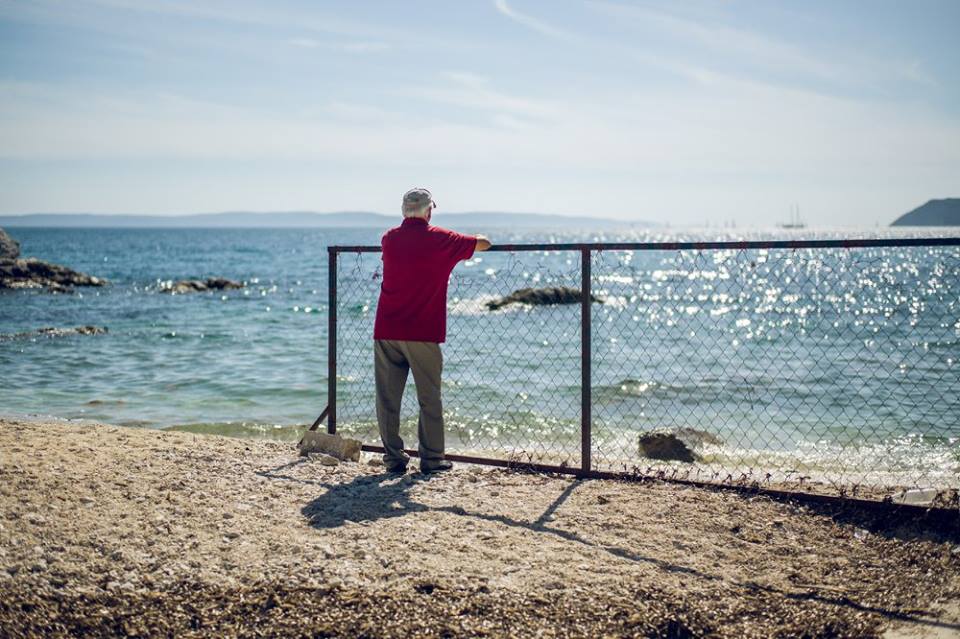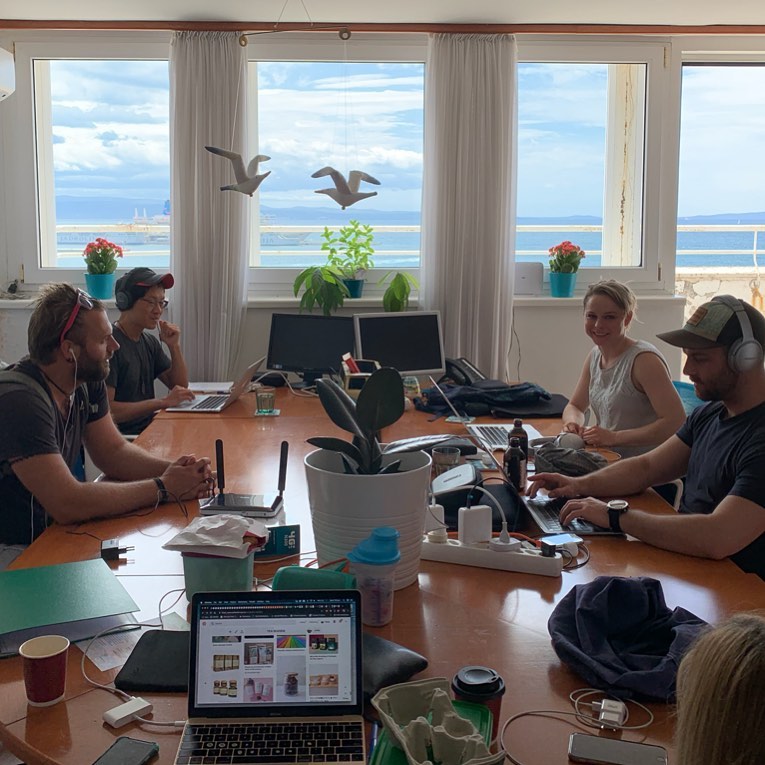Croatia Digital Nomad Permit Application FAQ by Saltwater/45 Degrees Sailing
March 10, 2021 - A great addition to the information resources for one of the hottest new topics right now - the Croatia digital nomad permit application FAQ by Saltwater Nomads and 45 Degrees Sailing.
And so it starts...
It is almost exactly 21 months (at least to my knowledge) since the concept of attracting quality remote workers to Croatia was introduced at the MBA Croatia conference, How to be Globally Competitive from Croatia.
Seeds were sown, a Dutchman wrote an open letter to a Prime Minister, legislation was changed, and the digital nomad 12-month permit (permit rather than visa is the current parlance) became a legal thing on January 1, 2021. A few weeks later we tracked down the first successful applicant, an American in Istria - Meet Melissa Paul, Owner of Croatia's First Digital Nomad Visa.
The online application form went live on the Ministry of Interior website on March 1, and over 25 people have applied so far.
Today, the Croatian National Tourist Board launched its campaign to welcome digital nomads, Croatia, Your New Office.
Things have been going at a whirlwind pace, and it has sometimes been difficult to find confirmed and accurate information.
One person who has been a trailblazing pioneer in the early days of the digital nomad story in Croatia is Tanja Polegubic, who runs Saltwater Nomads.
TCN and Saltwater partnered with the City of Dubrovnik and the Dubrovnik Tourist Board back in October, as Tanja organised Dubrovnik for Digital Nomads, the first-ever digital nomad conference in Croatia. She was assisted by an army of volunteers, including Nick Hathaway from 45 Degrees Sailing. And Tanja and Nick have teamed up again today, releasing a very useful Croatia Digital Nomad Permit Application FAQ on YouTube.
Join us for Croatia's Digital Nomad Permit Application FAQ with Tanja Polegubić from Saltwater and the Digital Nomad Association. We cover the top 6 most frequently asked questions for filling out the digital nomad permit application for Croatia. Application form details and application requirements can be known to change. For most up-to-date information please visit the official website This is our own personal advice based on our experience and understanding. It is not the advice of any official Croatian government source.
Tanja is also a founding member of the Digital Nomad Association, together with Jan de Jong and Karmela Tancabel, whose website is due to go live later this month.

TCN is teaming up again with Saltwater, the City of Dubrovnik, and Dubrovnik and National Tourist boards with the Dubrovnik Digital Nomads-in-Residence competition, with applications closing on March 31.
For the latest news about digital nomads in Croatia, follow the dedicated TCN section.
People Also Ask Google: How Many Days in Split is Enough?
February 23, 2021 - Continuing the TCN series answering the questions posed by Google's People Also Ask function, this time, one that is asked more often than not. How many days in Split is enough?
This is the ultimate question. And if you really wanted my honest opinion, I'd tell you to stay forever (here is why). Because that is not a reality for everyone, I've set out to find a happy medium for travelers making their way to Split, based on various scenarios, like seasons, main attractions, and those balancing the work-travel lifestyle of a digital nomad.
So, how many days in Split is enough?
While I have been visiting Split since 1996, I only really first fell in love with the city during my first full year here, or once I experienced Split outside of the peak summer months. September is now my favorite month in Split, and the magic of Diocletian's Palace during a brisk bura breeze or a warm spring day on Marjan is beyond compare.
But Split has and always will draw hordes of tourists in the summertime, and it's not difficult to see why. Thanks to its glistening coastline, outdoor activities, bustling city center, vibrant nightlife, and booming culinary scene, Split could equal one of Europe's top metropolitan cities if it maintained the summer buzz year-round.
But there is certainly an argument for each season and how many days are adequate given the time of year. Though I believe it all comes down to preference, in the end.
How many days in Split is enough in the preseason?
Ah, the magic of spring! While Croatia's preseason begins earlier each year, it's safe to say that Easter weekend is the official start of the preseason. However, before COVID-19, many airlines launched their summer flight schedules at the end of March, bringing tourists to Split even before the spring holiday. While there may not be as many connections now given the current circumstances (some airlines are pushing traffic back to May), if there is a will, there is a way - and Split in spring is pure bliss.
You'll notice restaurants and bars reopening after winter hibernation, sunny days and temps in the teens (Celsius), and empty alleyways usually swarmed by tourists in the summer. The biggest crowd you'll find is that of sunglass-clad locals gathering on the Riva for their morning coffee, enjoying every moment of spring sun before the summer storm (of tourists).

Matthew Christopher Miller
Nature flourishes in the spring. The local green markets are decorated with seasonal charms like wild asparagus and fava beans. Active tourism enthusiasts can hike in the hinterland or enjoy Mosor mountain without the blazing heat.
Spring is also crowned by events, the highlight of which is Split City Day, Sveti Duje, celebrated on May 7 each year. The event gathers thousands of citizens in the center for concerts, boat races, and fairs for days. While we can't say which events will happen this spring, the Croatia Boat Show has been announced for May, bringing the nautical elite, restauranteurs, and tourism reps to Split for five days before the official start of the 'peak' season.
Those of you looking to take day trips to islands will find that Jadrolinija still operates on the winter schedule, resulting in fewer connections (and much of the island closed). Still, those traveling by car can embark on journeys up and down to the coast, and even enjoy cheaper ticket prices at Krka National Park, only an hour away.
Visiting in the spring also comes with friendlier accommodation prices, making it a season with more bang for your buck!
Split in the spring is a sort of re-birth - when the city and its people come alive. While much of the city is just waking up, we suggest you take your time to enjoy the serenity of Split in the spring, and if you stay here long enough, you may even be able to swim.
How many days in Split is enough in the peak season?
Because most people choose to visit Split in the summer, how many days in the peak season is enough?
My honest answer to friends visiting from California is usually no less than five days. Why? Because while Split is a travel hub with access year-round, it is the epicenter of Dalmatia in the summer.
The truth is, those five days are never enough, and the majority of my friends plan to come for a week or more the next time they visit.
But what makes Split so hot (literally) in the summer?
In short, the city is a playground for all types of tourists. Whether you're in your early 20s and want to go bar hopping and nightclubbing until the early morning hours, or rather spend your days at the beach, trying your hand at water sports and rock climbing adventures, or exploring the historic center and its culinary charms, there really is something for everyone here.
And if you grow tired of Split (though highly unlikely)? It's the perfect base for a day trip to the islands, with numerous connections and Brač, Hvar, and Šolta only an hour away. You can hop on the bus or rent a car to visit the UNESCO-protected museum town of Trogir in 30 minutes, or head down the coast for a canyoning adventure in Omiš (but beware of summer traffic). You can tick off Šibenik, Primošten, and Rogoznica on a day trip to Krka National Park and head inland to horseback ride in Sinj (or watch the Sinjska Alka) in under an hour.
Music festivals like Ultra Europe see partygoers stay in Split for a week during the summer, while the Split Summer Festival and Diocletian Days events keep tourists amused with live music and historical entertainment for weeks on end.
The weather is HOT, the sun is shining, the sea is warm, and the air connections aplenty. If you don't mind the crowds or the heat, there is no time limit to Split in the summer. That is if you can afford it.
How many days in Split is enough in the offseason?
Split's shoulder season has become a favorite time for visitors, as September and October offer the perks of summer with usually milder weather and without the peakseason crowds.
The true offseason, however, is usually the quietest time of the year in Split. Some of Split's restaurants go into winter hibernation, as do its people, and empty squares and promenades are a reality in November.
But winter does have its perks, and while locals need some time to rest after a summer of hard work, they come back out to play in December for the festive Advent event. While we didn't get to enjoy it in 2020 due to obvious reasons, Advent usually lasts the entire month of December and into January, where you can ice skate, imbibe on mulled wine and hot gin, and enjoy sausages, live music, and Christmas-themed events.
You’ll also find that many restaurants in Split embrace the colder months with fare destined to warm your bellies, and many restaurants in the city stay true to the classics and traditions of Croatia for the new season to give you a taste of home cooking.
January and February are always the slowest months in Split, and whatever bars and restaurants reopened for Advent may close for 'renovations' until the spring.
But the offseason still offers plenty to do, like visiting its museums (Split City Museum, Meštrović Gallery, and Museum of Illusions are some of the most popular). You can enjoy ballet and musicals at the Croatian National Theater or catch the city's beloved football club Hajduk at Poljud until mid-December before they break until the end of January.
Split is also only a couple of hours away from Kupres in Bosnia & Herzegovina, a hit for Dalmatian skiers in the winter.
Nature never goes anywhere, and you could spend weeks exploring the natural wonders of the region with Split as your base. And if you can brave the winter bura wind, you may want to stay even longer.
How many days in Split is enough to explore Diocletian's Palace?
Now, one of the main draws to Split is Diocletian's Palace - and it's no surprise why. This UNESCO World Heritage Site was once Emporer Diocletian's retirement home, and today it wows world travelers thanks to its beauty and grandeur.
But how many days in Split do you need to explore this 4th-century palace?
It's first important to know that the palace makes up the city center's historic core and is marked by four gates through which you enter - the Golden Gate, Silver Gate, Iron Gate, and Brass Gate. Once you're within the palace walls, you'll notice shops, restaurants, bars, all connected by narrow cobblestone alleyways, which will likely get you lost more often than not.
The palace is also marked by many historical attractions, like the Saint Domnius Cathedral, Peristyle, Vestibule, Temple of Jupiter, and, of course, the famous substructures, or Diocletian's basement.
You could spend all day walking around Diocletian's Palace without really realizing it as local life bustles through, but should you stop to examine the details; you'll want to spend a bit of time here. Some say that a 75-minute walking tour is enough to experience Diocletian's Palace and its 1700-year-old history, which is probably true. But if you were to really embrace the essence of what Diocletian's Palace is for the city today, you'll need at least a few days eating and drinking your way around palace walls, among the locals, to stumble upon all of its charms.
How many days in Split is enough for a digital nomad?
If you're balancing the work-travel lifestyle and are planning on taking advantage of the new digital nomad visa in Croatia, we suggest you make full use and stay a year. Split is a mecca of coffee shops and new coworking spaces. You can enjoy fast internet, good weather, and safe streets. It's also affordable for long-term rentals in comparison to other European cities. Not to mention you'll get to experience everything I've written above - every season, every inch of Diocletian's Palace, and everything that makes Split as special as it is.

Saltwater Coworking Space
Conclusion: How many days in Split is enough?
All in all, that's entirely up to your time, budget and preference. Truly, there is no number of days too large. I am going on six years here and Split still finds ways to surprise me. You will certainly feel the magic of Split during an afternoon coffee or a night around town, but to truly embrace the essence of the city, do yourself a favor and stay a little longer.
To follow the People Also Ask Google about Croatia series, click here.
Expats in Croatia/Pandemic Edition: Michael Freer, from UK in Split (VIDEO)
February 10, 2021 - The global pandemic rages on and we’re still locked down with restrictions and social isolation. Some people are surviving and others are thriving. What’s their story? Episode #3 with… Michael Freer from the UK.
It’s almost one year since the World Health Organization declared covid-19 a global pandemic on March 11, 2020. Nobody expected what came next and certainly nobody expected things to last this long. But here we are, wondering when it will be over and hoping the vaccine will restore some sense of normalcy.
In the meantime, how are people filling their days? When it’s all said and done, how do they want to remember this time looking back? In this new series we’ll hear from all sorts of people in Croatia about their pandemic experience and their predictions for the future.
Episode #3 with… Michael Freer from the UK.
Since arriving in Croatia nearly 6 years ago, Michael Freer has become somewhat of a local celebrity on the Split scene. For a guy who’s lived in multiple countries around the world—Spain, Argentina, and India for six months or more, and Cambodia for two years—he’s a “regular” around here. A little background… in Cambodia he worked for a school on curriculum development and he managed volunteers. He also had a factory gig implementing social accountability standards. Here in Split he runs his own company supporting early stage social enterprises and dedicates one day a week to working for a nonprofit, supporting foreign entrepreneurs for an EU project. Outside of all this, or perhaps because of it, he’s constantly networking, meeting new people, and getting his hands into all sorts of innovative projects. Commendable stuff, but what made the biggest impression on this girl? It was this, “oh yeah, I swim all year long, I go in the water every week.” Anyone who can jump in the Adriatic in these winter temperatures is celebrity-worthy in my book. And one more “plus” on my checklist, he learned how to make goat cheese during lockdown. Yum!
Story and photographs ©2021, Cyndie Burkhardt. https://photo-diaries.com
For more of Cyndie's experiences, check out her Croatia Through the Eyes of a Digital Nomad column.
Are you an expat in Croatia who would like to share your experiences during the pandemic in Cyndie's video series? If yes, please contact her on This email address is being protected from spambots. You need JavaScript enabled to view it.
We are also keen to interview any digital nomads who have successfully applied for the new visa, after the first success in Istria - Meet Melissa Paul, Owner of Croatia's First Digital Nomad Visa. Please contact us on This email address is being protected from spambots. You need JavaScript enabled to view it. Subject Nomad Visa.


